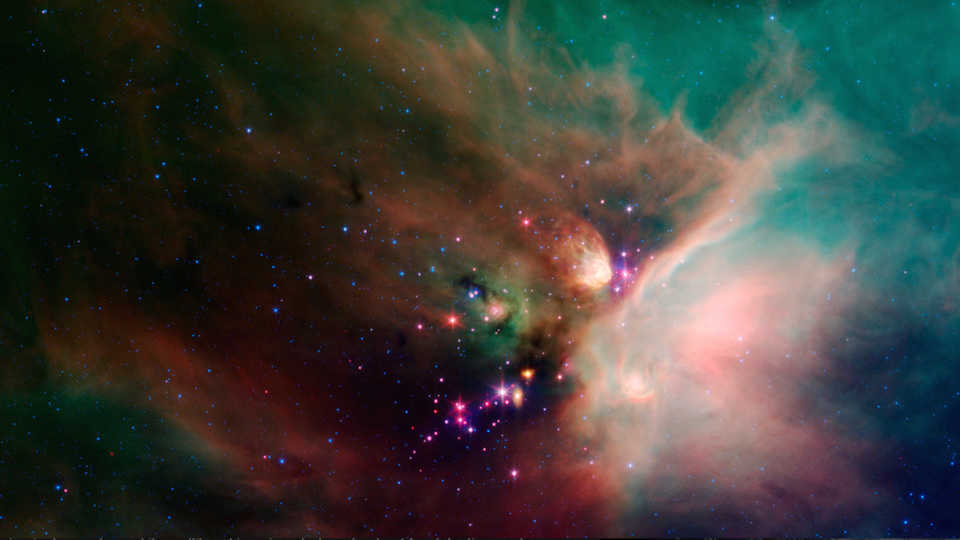Universe Update
Dust Grains Tell a RAT Tale
Space is empty, right? Like, no one can hear you scream empty…?
True enough on average, but some regions of space have more stuff than others. Regions where stars and planets form, where matter gets pulled together by gravity are basically dense parts of the Universe becoming denser. We’re intrigued by these not-so-empty places because our own planet formed under similar circumstances. But astronomers are still working out the details of the processes that take us from giant (kinda dense) clouds of gas and dust to compact (super dense) stars and planets. What effect does intense radiation have on star formation, for example? Or how do magnetic fields influence events?
Astronomers hope to fill in more details using new techniques described at the American Astronomical Society (AAS) meeting held in National Harbor, Maryland, this week. These observations use infrared light (lower-energy light than the human eye can detect) observed by the airborne Stratospheric Observatory for Infrared Astronomy (SOFIA) to do what no earthbound instrument can…
We’ve talked about infrared observations of star formation previously (from an AAS meeting in 2012, coincidentally). And our “Jumbo Jet Astronomy” video this past October took you onboard SOFIA (albeit looking at a very different science project). But today’s announcements couple spiffy observations with a refined theory on how these stories come together.
The SOFIA airborne observatory is uniquely positioned (literally, since it’s an infrared telescope flying in a 747, above Earth’s interfering atmosphere) to measure some of the finer details of dust around newborn stars. Including the effect of those aforementioned magnetic fields. At today’s press conference, Fabio Santos from Northwestern University described SOFIA observations of Rho Ophiuchi, an aesthetically-pleasing star-forming region about 424 light years away from Earth. SOFIA measured not just the light’s brightness and color but also its polarization. (The first image above shows intensity mapped as multicolored blobs, with red being the strongest, while the direction of polarization is denoted by the small black lines.) Astronomers have good reason to believe that magnetic fields cause the polarization of infrared light in these regions, and for quite some time, they have assumed just that. But other environmental conditions can also affect polarization, which demands a more detailed theory—and the leading candidate goes by the catchy name of the Radiative Alignment Torque (RAT) theory.
B-G Andersson, the Associate Director of Science Operations for SOFIA, described RAT at the press conference, and his web page does an even more thorough job! Basically, we know that the infrared light is being emitted by dust, and according to RAT, radiation (produced in large quantities by newborn stars) will not only cause the dust grains to start spinning, but spinning grains made of paramagnetic materials will align themselves with the magnetic field. This then affects the polarization of the observed light. But RAT addresses other factors, too, including the intensity of the incident radiation (again, produced in large quantities by newborn stars).
At the press conference, Andersson announced SOFIA observations that bolstered the RAT theory, and Santos confirmed that his Rho Ophiuchi observations were also consistent with RAT. Which is just ducky! It means that astronomers not only have a pretty good idea what’s happening with the dust grains, but they also have the technology to observe the effects. Astronomers can thus use the polarization of light to explore not just the magnetic fields but other environmental conditions as well—the strength of the local radiation field and the mineralogy of the dust grains (some paramagnetic, some not), for example—and perhaps to shed light (so to speak) on how and where dust grains grow.
So, yeah, space isn’t totally empty. At least in the interesting places where stars and planets take shape, gas and dust interacts with radiation and magnetic fields in weird and wonderful ways. Today’s announcements describe new avenues that astronomers can explore to learn more about our cosmic origins.

